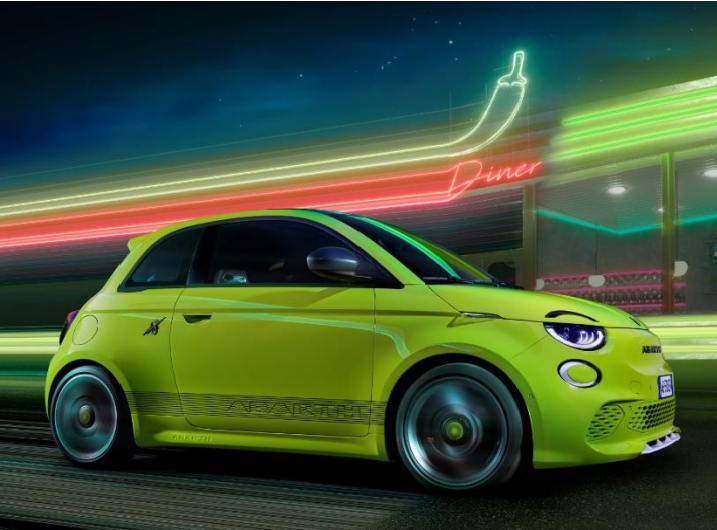The Renault Kadjar mid-sized SUV is the big brother to the company’s Captur model and has been usefully improved in this revised form.
Background
Renault’s Kadjar is a family-shaped mid-sized SUV model that’s smart, sensible and, in its way, quite aspirational. It was launched in 2016, then updated three years on to create this improved version, developed from much of the same technology that brought us the segment-leading Nissan Qashqai. It’s certainly a more interesting family choice than that Focus-class hatch you might have been considering.
It took Renault a long time to get on board with a properly class-competitive mid-sized family SUV. This Kadjar model, the brand’s first such contender, has only been around since 2016, when it was launched as the family hatch-based big brother to the French maker’s popular supermini-based Captur crossover. Prior to that, the French maker’s attempts to make real inroads in the family section of the SUV segment had proved notably unsuccessful. We had various off road-orientated versions of the Scenic MPV, plus there was the unloved first generation Koleos SUV, launched in 2007, but soon withdrawn from sale.
That year, 2007, was when Renault were shown what that Koleos model ought to have been. Their Alliance partner Nissan launched a Crossover called the Qashqai that quickly came to define family SUV motoring and when that car was re-designed in 2014, Renault had another go at creating their own version of it: the Kadjar was the result. This time, the Gallic maker managed to deliver a contender much closer to what the market wanted and as a result, over 450,000 Kadjars were sold in over 50 countries in this model’s first four years on sale. Hence the effort then put into creating the updated version we look at here
The Renault Kadjar Driving Experience
Once, not long ago, the Kadjar offered a wide range of different engines but now, as this first generation version reaches the end of its production run, there’s just one unit on offer, a 1.3-litre four cylinder TCe petrol powerplant putting out 140hp. Rest to 62mph in a TCe 140 derivative takes 10.4s en route to 126mph – or 9.6s if you opt for the extra-cost EDC automatic version.
As before, the basic suspension set-up (like virtually all the engineering) is carried over from the earlier version of this model’s cousin, the Nissan Qashqai, albeit with some Renault-specific tuning. It makes a Kadjar manoeuvrable in town, with a tight 10.72m turning circle, and the driving position has been designed to mirror that of a typical saloon, rather than a high-set 4×4. This model is now front-wheel drive only, but all versions are fitted with an ‘Extended Grip’ system, which is claimed to enhance grip on low-traction surfaces. A reasonably high 19cm ground clearance is loftier than some rivals.
This TCe 140 Kadjar lacks the sophisticated independent rear suspension that used to be fitted on the now-deleted more powerful versions, but even the more conventional set-up still in place is very adept and cushioning away poorly tarmacked surfaces. So yes, you’ll like this car on the school run. Which of course, for all the ‘urban adventurer’ marketing, is actually its preferred habitat.
The Renault Kadjar Design and Build
This car was updated for the 2019 model year but unless you happen to be a Renault sales person or an owner of the original version of this car, you’ll struggle to notice many of the changes that were made to the exterior. As before, the Kadjar looks like a scaled-up version of Renault’s smaller Captur SUV – which is no bad thing. Of more importance is the news that the interior of this car was treated to a much-needed re-fettling as part of the update. The fascia was given a smarter 7.0-inch centre-dash touchscreen that proved to be a big improvement on what was offered before. And smarter instrument cluster displays were added too.
Otherwise, things are much as they’ve always been with a Kadjar, with an underlying structure shared with the older version of this model’s Renault Alliance cousin, the Nissan Qashqai. It’s slightly more spacious in the back than the older version of that car mind you. And the boot is a useful size, rated at 472-litres when using the tonneau cover. You get handles that drop the rear seats in their 60/40 split, an organiser that prevents your shopping spilling all over the boot when you corner and a split level load floor. There’s also 30-litres of oddments storage around the cabin and the front passenger seat can even be folded to use as an impromptu table.
The Renault Kadjar Market and Model
Pricing starts at just under £25,000 and runs up to just under £28,000, so conforms to the class norm. There’s the choice of two trim levels – ‘Equilibre’ and ‘Techno’. Each offers the £1,600 option of EDC auto transmission. All variants get alloy wheels, tinted windows, front fog lights, auto headlamps and wipers and rear parking sensors. Inside, all models get Apple CarPlay or Android Auto smartphone-mirroring marshalled by a 7-inch centre-dash screen. There’s also cruise control, automatic climate control and a synthetic leather steering wheel, plus an electronic parking brake, large cupholders, a sliding armrest and ambient lighting. The ‘Equilibre’ model offers 17-inch wheels, front parking sensors, a reversing camera, roof bars and navigation. The top ‘Techno’ versions get 19-inch wheels, full-LED headlights, roof bars, front and rear skid plates and special synthetic leather seat upholstery.
Standard safety kit includes Lane Departure Warning and an automatic high and low beam system for the headlamps. Otherwise, safety provision is limited to pretty standard stuff. All models get twin front, side and curtain airbags (though no driver’s knee ‘bag), plus the usual electronic aids for braking, traction and stability control. ISOFIX child seat fastenings, tyre pressure monitoring and Hill start assist to stop you from drifting backwards on uphill junctions are all additional features that make the team sheet.
The Cost of Owning a Renault Kadjar
The 1.3-litre TCe 140 variant’s petrol 1.3-litre unit isn’t the most efficient in the segment but the figures delivered remain respectable, aided by this Renault’s relatively light weight. In a manual variant, you’ll manage 145g/km of CO2 and 44.1mpg on the combined cycle. Choose either the EDC auto or the ‘Techno’ variant with its bigger wheels and fortunately, the figures don’t change much.
All versions provide the peace of mind of Renault’s 5 year/100,000 mile warranty and assistance package. In the event of a breakdown, Renault provides emergency roadside repairs or towing to the nearest dealer 24/7 every day of the year, plus three years’ European cover. There is also a three-year paint warranty and 12 years’ cover against corrosion. Servicing is required once a year or every 18,000 miles. As usual, pre-paid servicing plans are available. It’ll certainly help that the ecological oil filter needs replacing only every 18,000 miles and the timing chain is maintenance-free. The timing belt requires changing only every 100,000 miles and the close-coupled diesel particulate filter has been designed to last the lifetime of the car.
Summary
The one thing we haven’t talked about is that name. North African tribe? Middle Eastern trade wind? Wrong – and wrong. Apparently, it’s one of those portmanteau French words where ‘Kad’ is inspired by the word ‘quad’ (the casual term for a four-wheeled all-terrain vehicle) and ‘Jar’ is a reference to the French words ‘agile’ and ‘jaillir,’ which means to ’emerge quickly’. A touch ironic that, given that this French brand took so long to establish itself in this profitable family Crossover segment.
In summary? Well you could say that it would have been difficult for Renault to fail with this SUV, given the proven underpinnings it’s based upon. For a decade though, this French brand had the right ingredients for a model like this but failed to blend them together into an appropriate car for the Crossover crowd. The Kadjar did that at its launch in 2016 and the brand was never going to risk spoiling things by making too many far-reaching changes when the time came for an update three years later. As it turned out, the updates made were timely and well-judged. This Kadjar may not be the ‘ultimate urban adventurer’ the ads claim, but it’s the kind of car that really could add a more appealing dimension to family travel. If you are interested in the Renault Kadjar enquire now.




